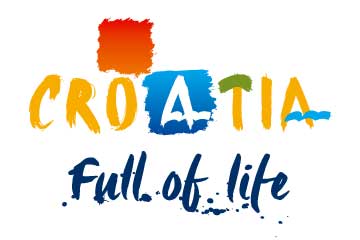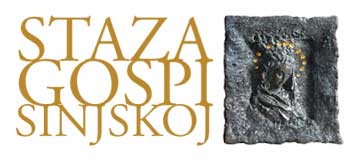Folk Costume
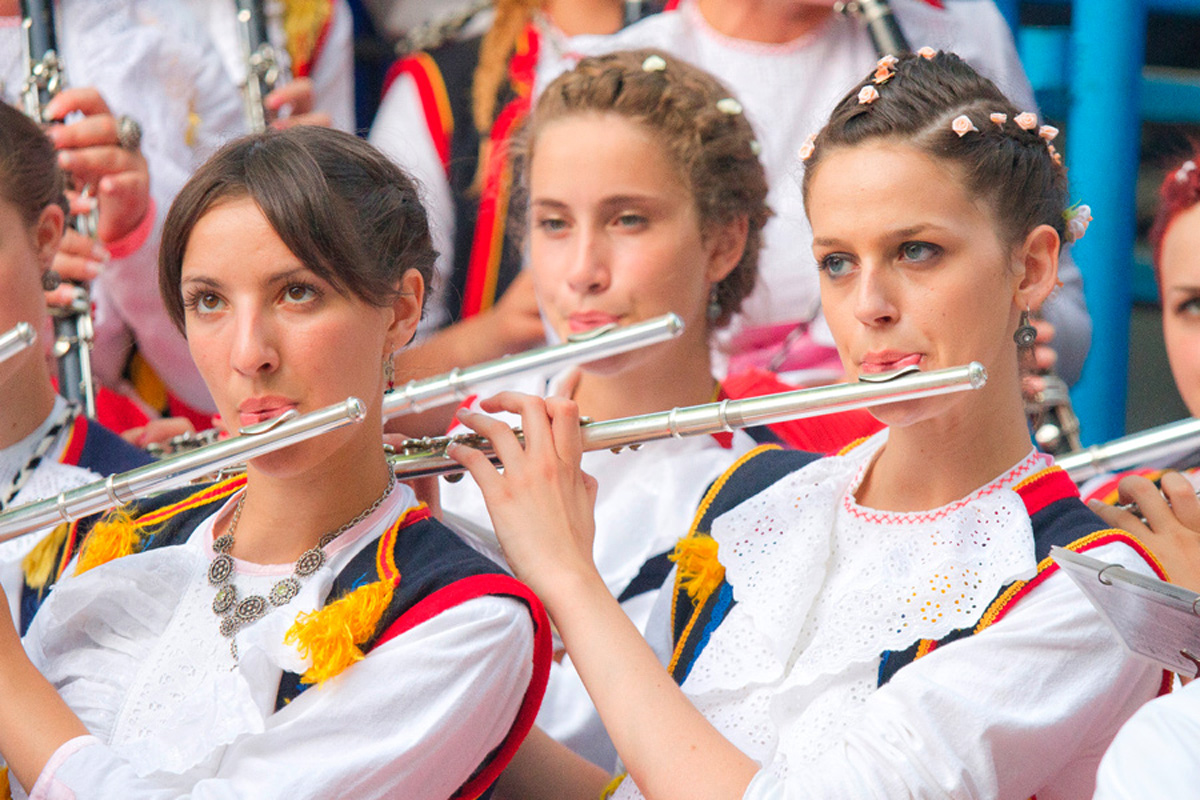
Young Women's Costume
A typical headdress included a little red cap (today only a flower), the shirt was the same as the one of a married woman, instead of the krožet (traditional homespun waistcoat) was the primetača (piece of clothing only covering breasts where it has white linen decoration, especially below the throat) with lace and embroidery, the white homespun oplećak (bodice), fastened at the front with the coloured kurdele (sg. kurdela, band), a white linen pleated skirt, a red wool apron, on the back the braided ječerma (type of jacket) made from dark blue homespun, on their feet white cotton socks and the opanci (sg. opanak, a type of tanned leather peasant folk moccasin) with thimbles.
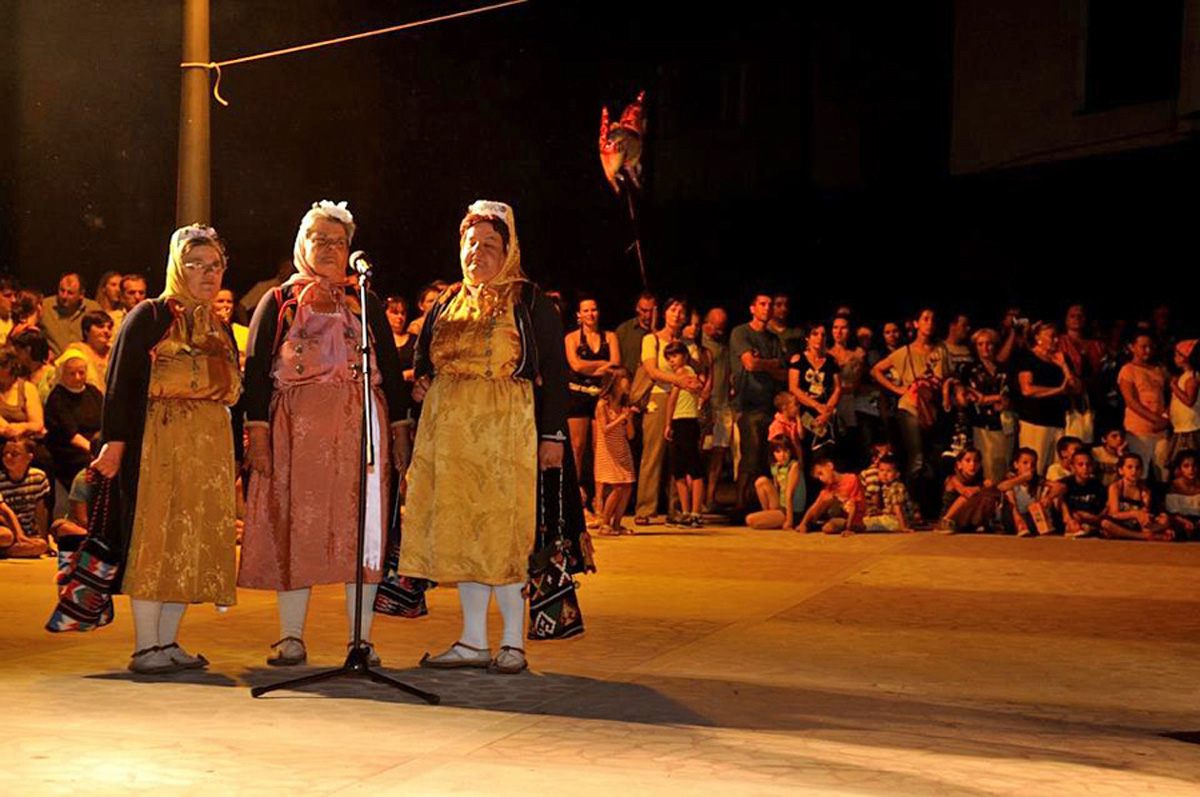
Married Women's Costume
Headwear consisted of the vindelj or findelj (also known as the kovrljak – usually straw-knitted and hemmed), covered with the okrug (white headscarf). Only its front could be seen, as it was covered with the šudar, a large silk headscarf, falling down the back. Married women also used to wear white linen shirts with embroidered sleeves, the colourful silk krožet (piece of clothing for the upper part of the body, having no sleeves and open in front), the dark blue homespun oplećak (women's piece of clothing for the top part of the body, made from wool and with sleeves, worn in wintertime), the long pleated skirt or kotul, made from dark blue homespun, the ječerma (knee-length sleeveless open front simple jacket) decorated with yellow braid, the silk rose apron or traverša, and the silk band or cendalj round the right hip.
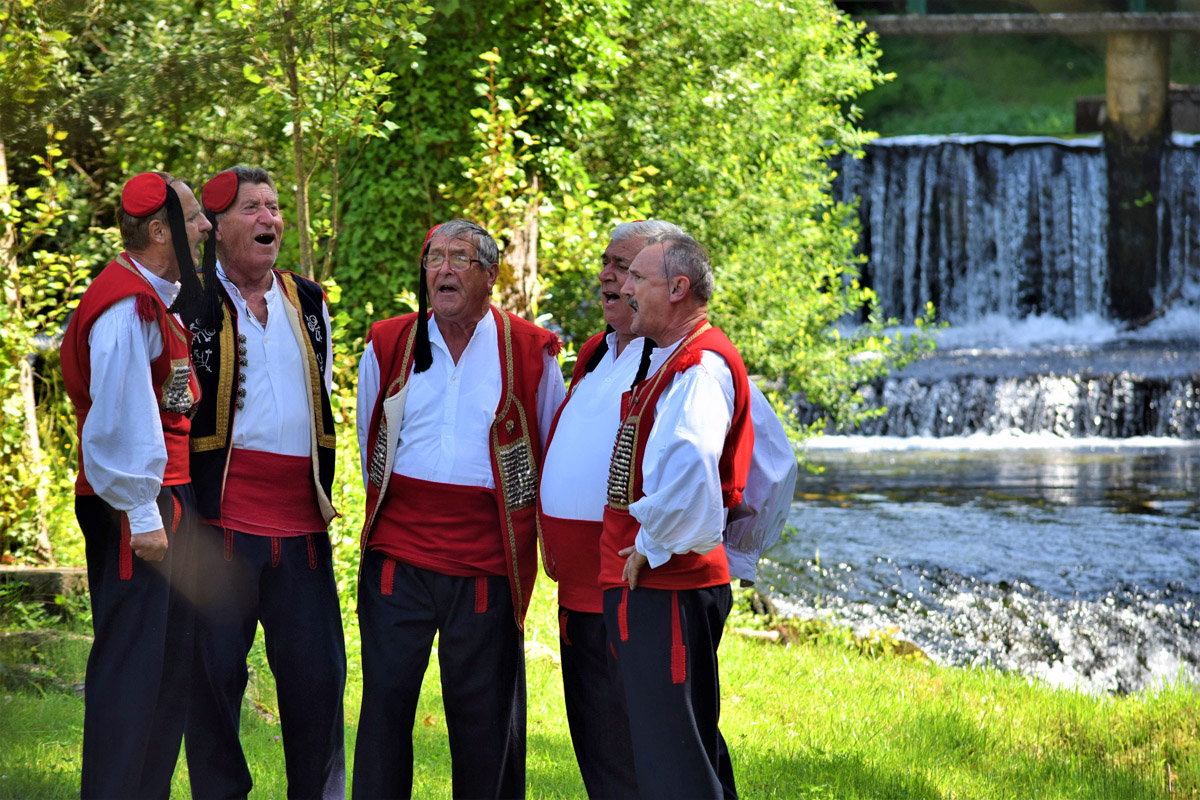
Men's Costume
Men used to wear white wide-sleeve shirts with the jačica (collar), the white krožet, the coarse navy blue homespun trousers with openings (na promaju), the brown homespun kumparan (homespun folk jacket), homespun socks, the colourful terluci (sg. terluk, woollen slip-ons without heels worn over socks), the laced opanci and a small red cap with a long black tassel.





